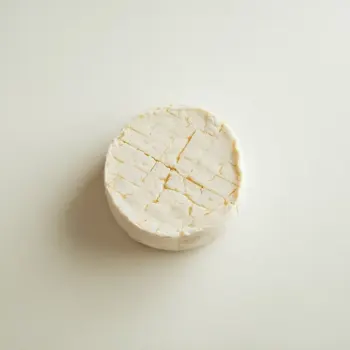Goat Cheese vs Feta Cheese are two distinct types of cheese used in cooking for their unique flavors and textures; goat cheese is creamy and tangy, ideal for spreads, while feta is salty and crumbly, perfect for salads.

Goat cheese, also known as chèvre, refers to any cheese made from goat's milk. It comes in a variety of forms, from soft and spreadable fresh cheese to firm and aged. It's known for its tangy, earthy flavor which can vary in intensity depending on its age.

Feta cheese is a brined curd cheese traditionally made in Greece from sheep's milk, or a mixture of sheep and goat's milk. Its flavor is tangy and salty, with a crumbly and slightly grainy texture.
While both can be tangy, goat cheese is typically softer and more spreadable, with a tart and creamy profile, whereas feta is saltier and has a crumbly texture. Goat cheese is often sold fresh, while feta is aged and brined. The milk source also differs, with goat cheese made exclusively from goat's milk, and feta commonly from sheep's milk or a blend including goat's milk.

Your ultimate Recipe Box, Meal Planner, and Cooking Class all in one
Ideal for adding creaminess to salads, goat cheese can be crumbled over greens or melted into warm salads. Its creamy texture complements nuts and beets well. Feta adds a salty burst to salads, pairing well with watermelon, cucumbers, and tomatoes. Its crumbly texture holds up in chunky Greek salads.
Goat cheese melts beautifully, making it great for topping pizzas or baked pastas. It adds a creamy, tangy layer to dishes like lasagna or stuffed peppers. Feta holds its shape when baked, adding a salty, tangy flavor to spanakopita or roasted vegetable medleys. It can also be baked whole as a dish on its own.
Soft goat cheese can be the base for creamy spreads or dips, blending smoothly with herbs and garlic. It's perfect for a whipped cheese dip or a tangy spread on sandwiches. Feta can be mixed into chunky dips like tzatziki or whipped into a smooth texture for feta dip. Its saltiness complements spicy and savory flavors.
Both goat cheese and feta cheese are good sources of protein and calcium. However, feta is typically higher in sodium due to the brining process.
| Nutrient | Feta Cheese ( per Ounce ) | Goat Cheese ( per Ounce ) |
|---|---|---|
| Fat | 6g | 8g |
| Sodium | 260mg | 130mg |
| Calcium | 140mg | 40mg |
| Protein | 4g | 6g |
| Calories | 80 | 103 |
| Carbohydrates | 1g | 1g |
Yes, but it will alter the salad's taste and texture. Goat cheese is creamier and less salty than feta.
It depends on the desired outcome. Goat cheese melts and becomes creamy, while feta holds its shape and adds a tangy saltiness.
Both cheeses are lower in lactose than cow's milk cheeses, but the exact content can vary. Generally, aged cheeses like feta may have less lactose.
They may be suitable for some individuals with cow's milk allergies, but it's essential to consult with a healthcare provider first.
Goat cheese has a creamy and tangy flavor, while feta is known for its salty and tangy taste with a crumbly texture.